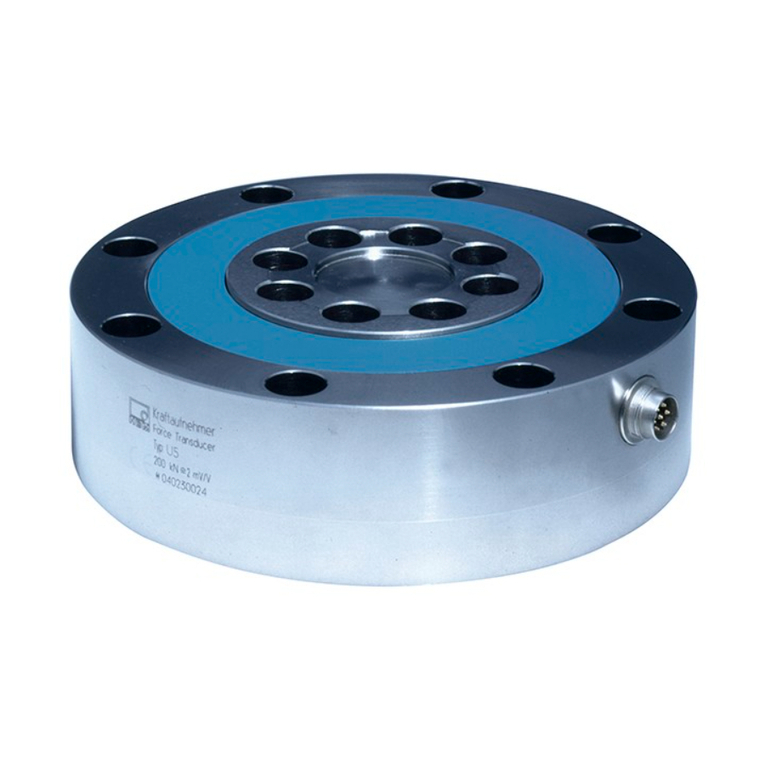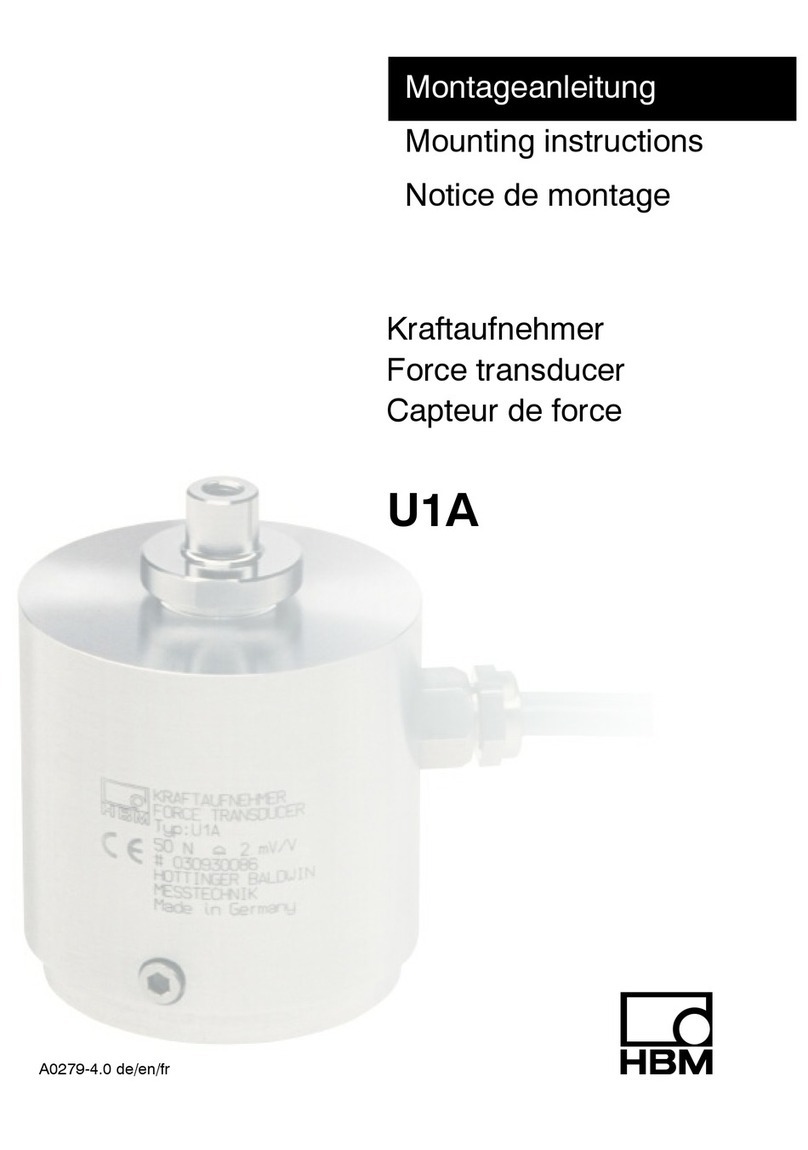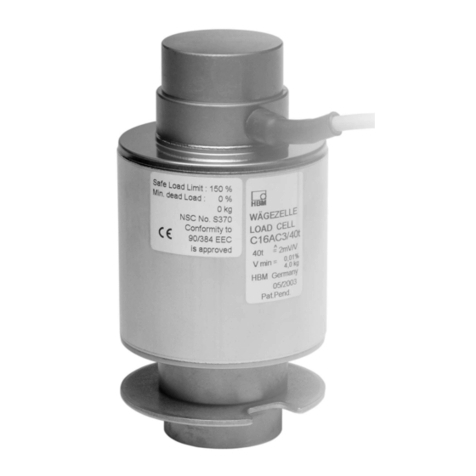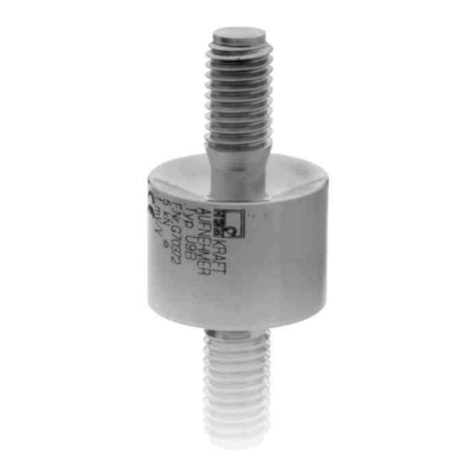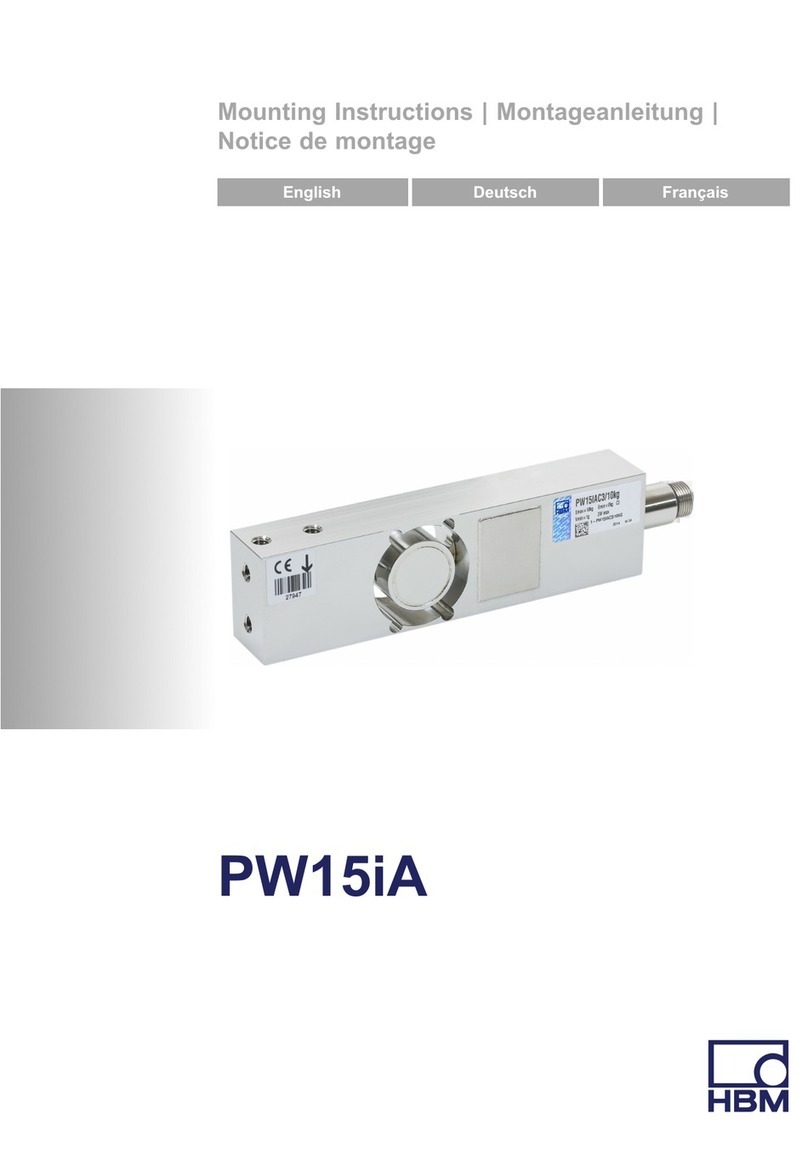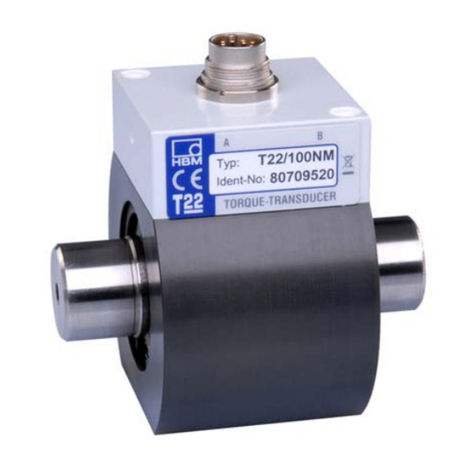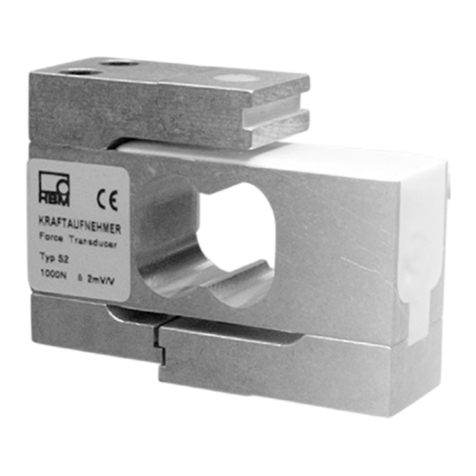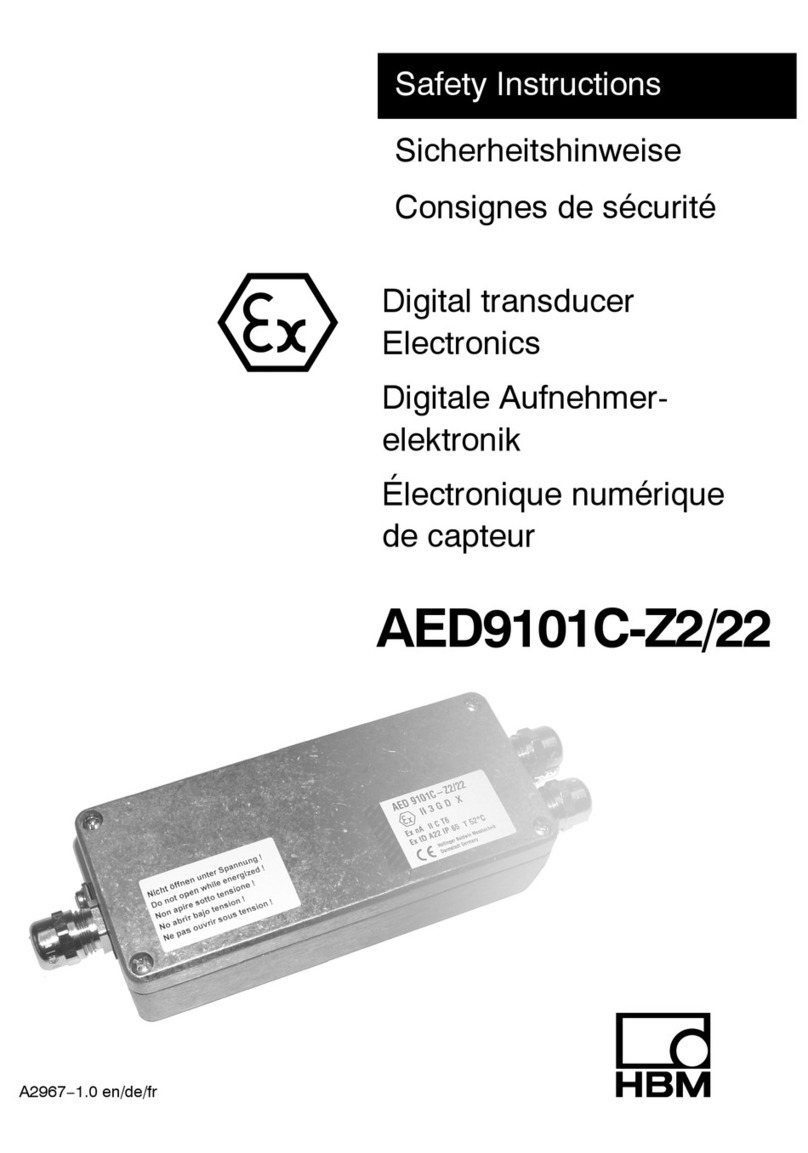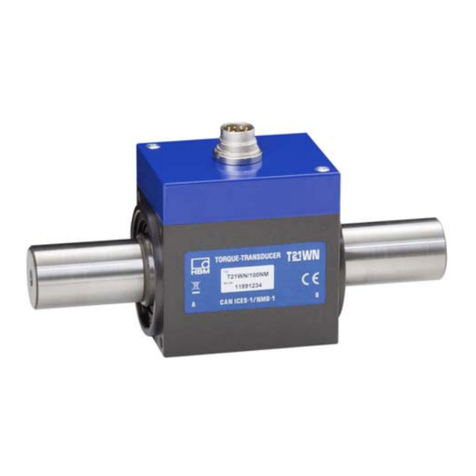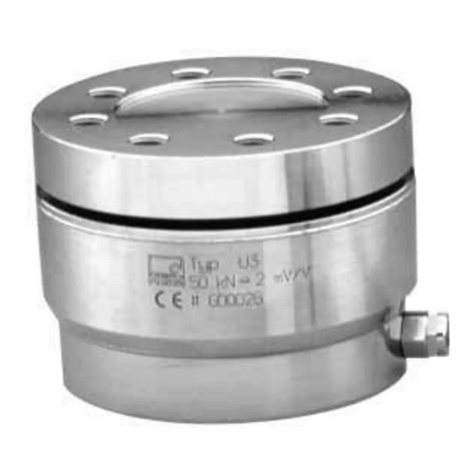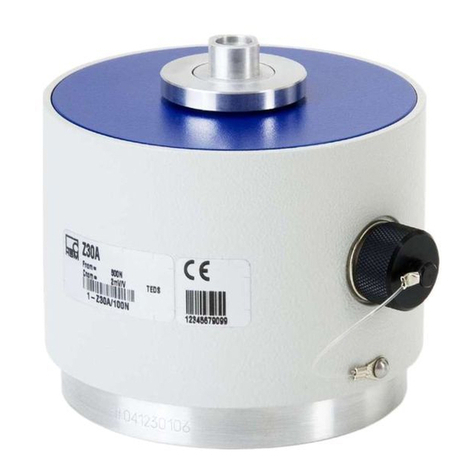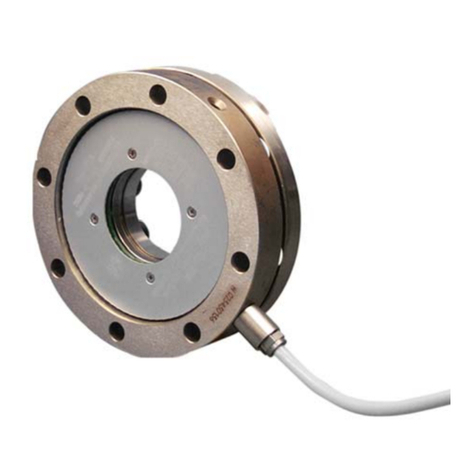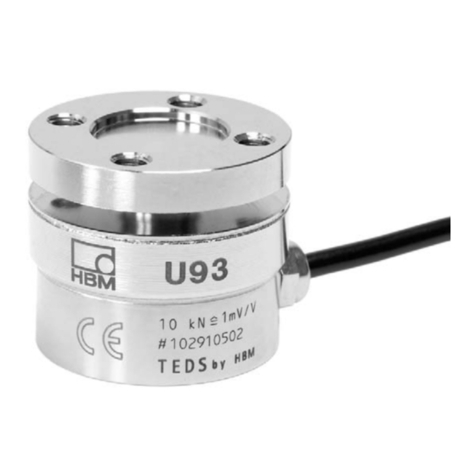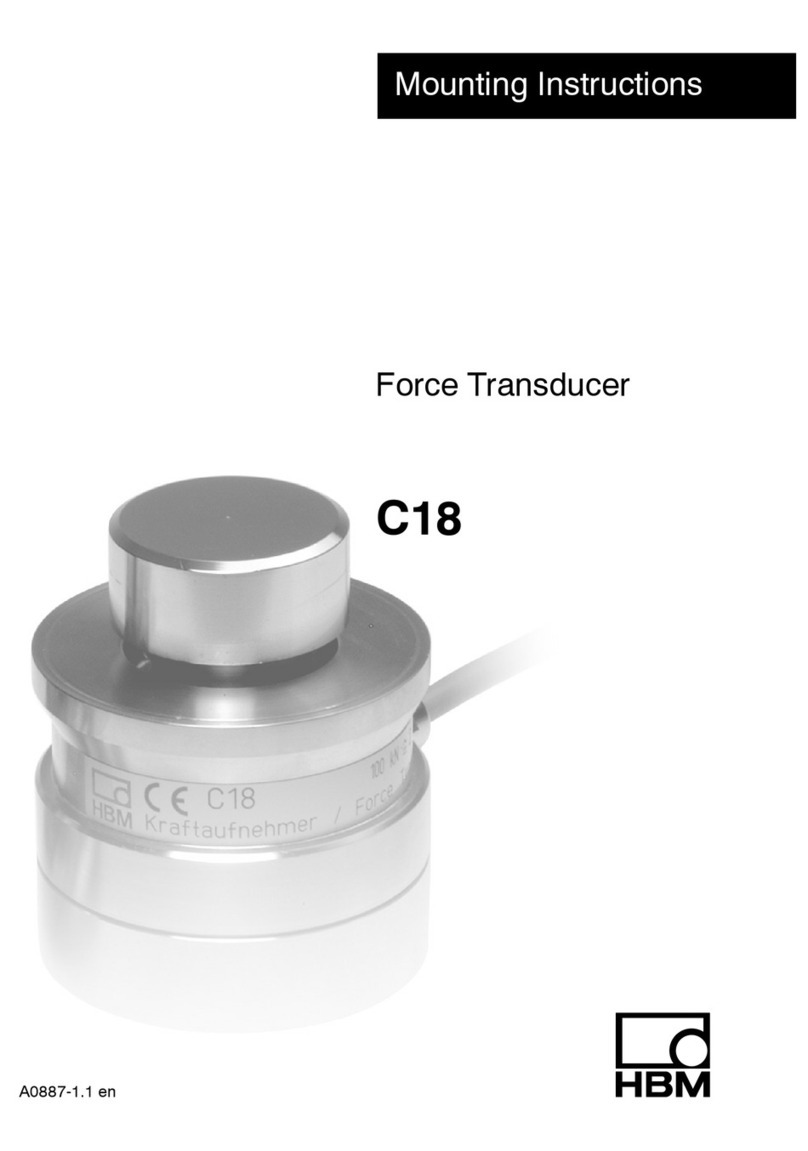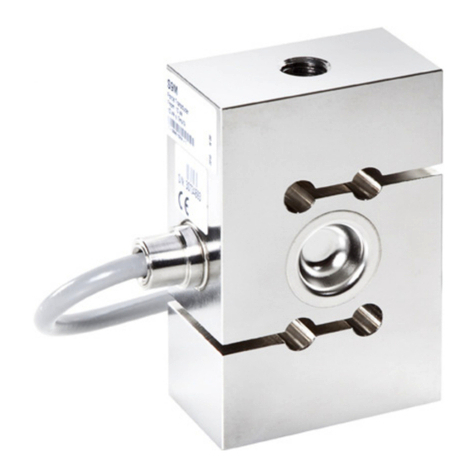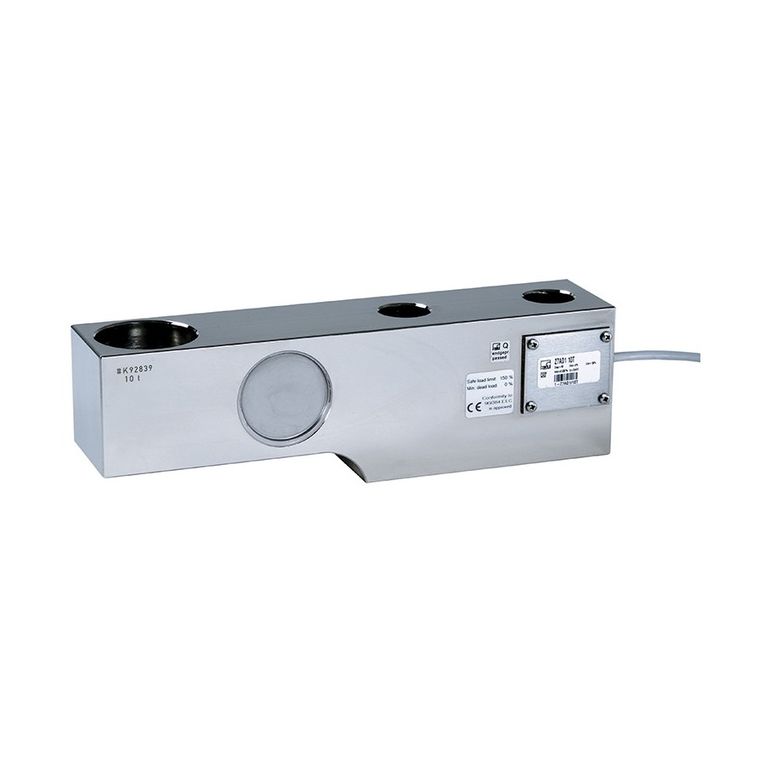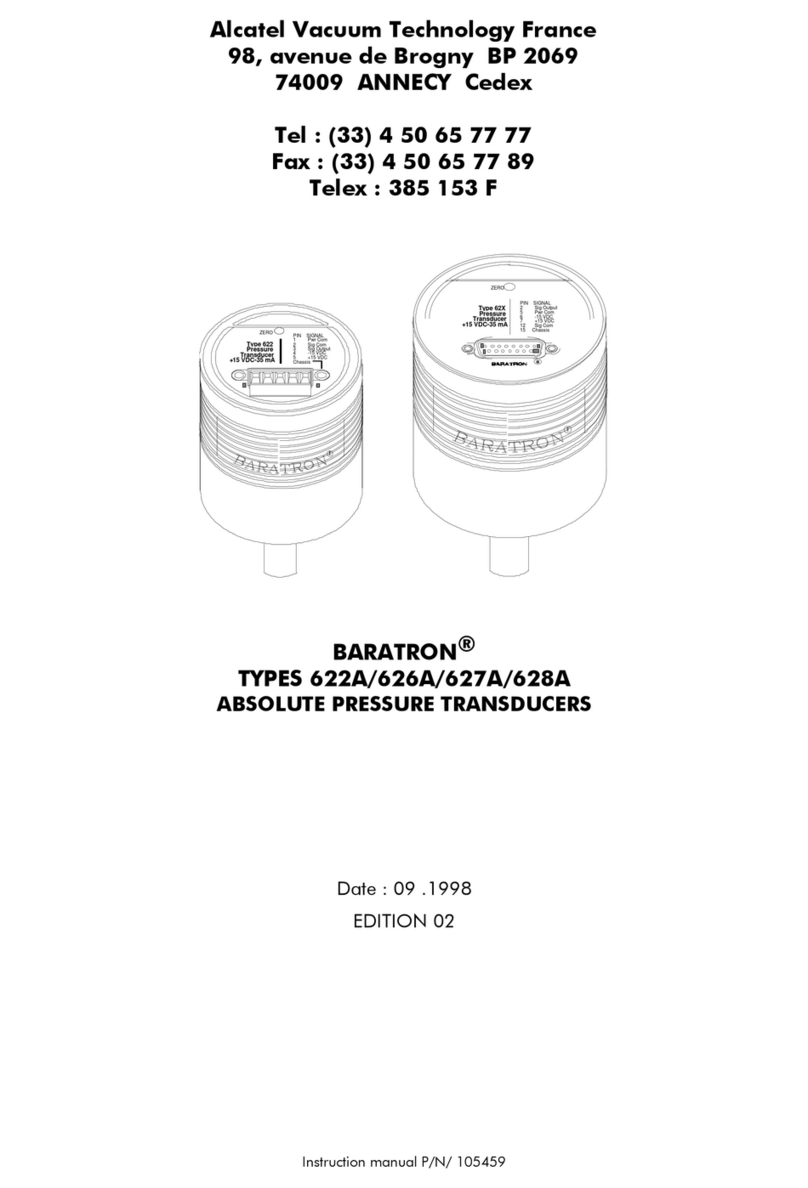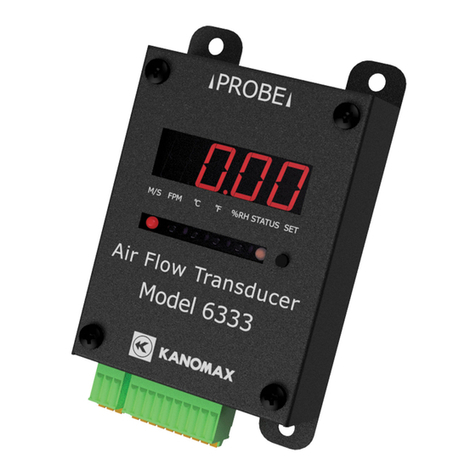
Safety instructions
6A3592-1.3 HBM: public S2M
The layout of the electronics conditioning the measure
ment signal should be such that measurement signal fail
ure does not cause damage.
General dangers of failing to follow the safety
instructions
The force transducers are state‐of‐the‐art and reliable.
There may be risks involved if the transducers are moun
ted, sited, installed and operated inappropriately, or by
untrained personnel. Every person involved with siting,
starting‐up, operating or repairing a force transducer
must have read and understood the mounting instruc
tions and in particular the technical safety instructions.
The force transducers can be damaged or destroyed by
non‐designated use of the force transducer or by
non‐compliance with the mounting and operating instruc
tions, these safety instructions or any other applicable
safety regulations (BG safety and accident prevention
regulations) when using the force transducers. Force
transducers can break, particularly in the case of over
loading. The breakage of a force transducer can also
cause damage to property or injury to persons in the
vicinity of the force transducer.
If force transducers are not used according to their desig
nated use, or if the safety instructions or specifications in
the mounting and operating instructions are ignored, it is
also possible that the force transducer may fail or mal
function, with the result that persons or property may be
affected (due to the loads acting on or being monitored
by the force transducer).
The scope of supply and performance of the transducer
covers only a small area of force measurement techno
logy, as measurements with (resistive) strain gauge
sensors presuppose the use of electronic signal condi
tioning. In addition, equipment planners, installers and






